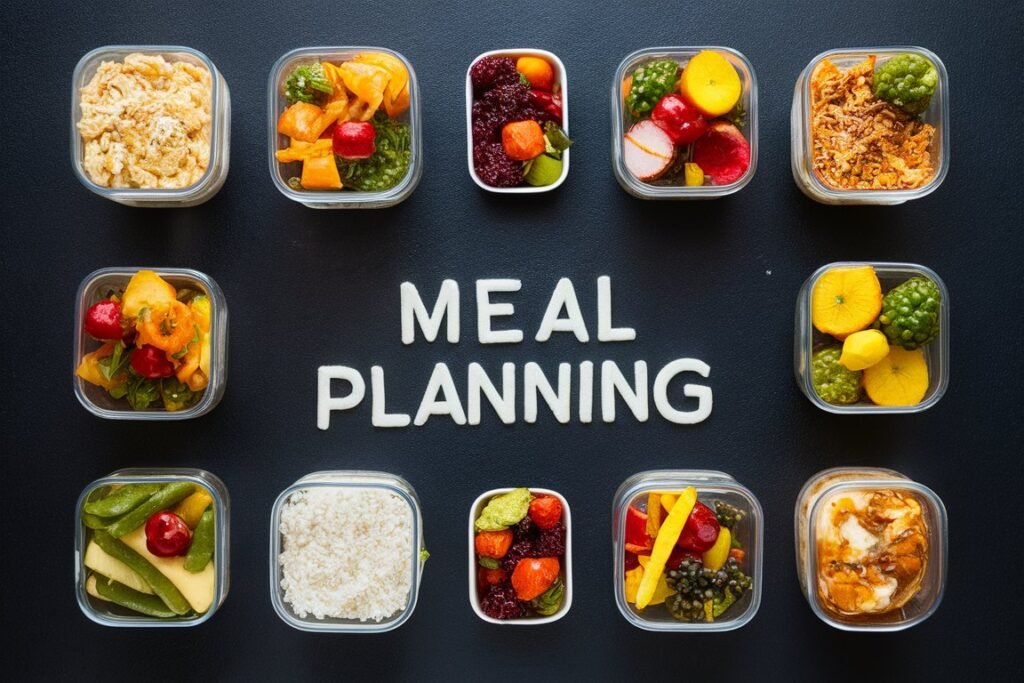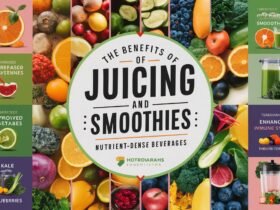Meal Planning and Meal Prep for Healthy Eating
Hey there, my young and adventurous friends of 2024! It’s your nutrition buddy from the past, Nita Sharda, here to take you on a fun and tasty journey into the world of meal planning and meal prep – the secret weapons of healthy eating!
Now, I know that the words “meal planning” and “meal prep” might sound a little boring or even intimidating at first, like something only grown-ups do. But trust me, once you discover how easy and delicious it can be to plan and prepare your own healthy meals and snacks, you’ll never look at lunchtime the same way again!
So, are you ready to become a meal planning and prep master? Let’s get started!
What is Meal Planning and Meal Prep?

First things first, let’s talk about what we mean when we say “meal planning” and “meal prep.”
Meal Planning
Meal planning is the process of deciding what you’re going to eat for your meals and snacks throughout the week, and making a plan to ensure that you have all the ingredients and supplies you need to make those meals happen.
This might involve:
- Looking at your schedule for the week and deciding which meals you’ll need to prepare (e.g. breakfast, lunch, dinner, snacks)
- Choosing recipes or meal ideas that fit your tastes, preferences, and dietary needs
- Making a grocery list of all the ingredients you’ll need to make those meals
- Checking your pantry, fridge, and freezer to see what ingredients you already have on hand
- Planning for any special events or occasions that might affect your meal plan (e.g. a birthday party or a school field trip)
By taking the time to plan your meals in advance, you can help ensure that you have healthy and delicious options available all week long, and avoid the stress and temptation of last-minute fast food or vending machine runs.
Meal Prep
Meal prep, on the other hand, is the process of actually preparing some or all of your meals and snacks in advance, so that they’re ready to go when you need them.
This might involve:
- Chopping and washing fruits and veggies for snacks and salads
- Cooking big batches of grains like rice or quinoa to use throughout the week
- Preparing proteins like grilled chicken or hard-boiled eggs to add to meals and snacks
- Portioning out snacks like trail mix or veggie sticks into individual containers for easy grabbing
- Assembling full meals like salads or grain bowls to reheat and eat later
By taking some time to prep your meals and snacks in advance, you can save time and energy during the busy week, and ensure that you always have healthy options on hand when hunger strikes.
The Benefits of Meal Planning and Meal Prep
So, why are meal planning and meal prep so important for healthy eating? Let’s take a closer look at some of the amazing benefits:
Saves Time and Energy
One of the biggest benefits of meal planning and prep is that it can save you a ton of time and energy during the busy week. When you have a plan in place and some meals and snacks already prepared, you don’t have to waste time every day trying to figure out what to eat or rushing around to gather ingredients.
Instead, you can simply grab your pre-prepped meals and snacks and get on with your day, knowing that you have healthy and delicious options ready to go whenever you need them.
Helps You Make Healthier Choices
Another big benefit of meal planning and prep is that it can help you make healthier food choices throughout the week. When you take the time to plan and prepare your meals in advance, you have more control over the ingredients and portions you’re using, and can ensure that you’re getting a balanced mix of nutrients like protein, healthy fats, and fiber.
Plus, when you have healthy options readily available, you’re less likely to reach for less nutritious options like fast food or processed snacks when hunger or cravings strike.
Saves Money
Believe it or not, meal planning and prep can also help you save money in the long run. When you plan your meals and shop with a list, you’re less likely to impulse buy or waste food that goes bad before you can use it.
Plus, cooking meals at home is often cheaper than eating out or buying pre-made meals, so you can stretch your food budget further by preparing your own meals and snacks.
Reduces Stress and Decision Fatigue
Finally, meal planning and prep can help reduce stress and decision fatigue throughout the week. When you have a plan in place and some meals and snacks already prepared, you don’t have to waste mental energy every day trying to figure out what to eat or worrying about whether you have the ingredients you need.
Instead, you can relax and enjoy your meals and snacks, knowing that you’ve taken care of the hard work in advance.
Getting Started with Meal Planning and Prep
Okay, so now that we know why meal planning and prep are so amazing, let’s talk about how to get started!
Step 1: Make a Plan
The first step in meal planning and prep is to make a plan for the week ahead. This might involve:
- Looking at your schedule and deciding which meals you’ll need to prepare (e.g. breakfast, lunch, dinner, snacks)
- Choosing recipes or meal ideas that fit your tastes, preferences, and dietary needs
- Making a grocery list of all the ingredients you’ll need to make those meals
- Checking your pantry, fridge, and freezer to see what ingredients you already have on hand
Some tips for making a great meal plan:
- Keep it simple and realistic – don’t try to plan too many complicated or time-consuming meals if you know you won’t have the time or energy to make them happen
- Include a mix of different types of meals and snacks to keep things interesting and ensure that you’re getting a variety of nutrients
- Plan for leftovers – cooking extra at dinner can give you easy lunch options for the next day
- Be flexible – it’s okay to switch things up or make substitutions if needed, as long as you’re still focusing on healthy, whole food options
Step 2: Go Shopping
Once you have your meal plan and grocery list in place, it’s time to go shopping! Some tips for a successful grocery trip:
- Stick to your list as much as possible to avoid impulse buys and wasted food
- Shop the perimeter of the store first, where the fresh, whole food options are usually located
- Read labels carefully and choose options with simple, recognizable ingredients whenever possible
- Don’t shop hungry – eat a snack before you go to avoid temptation and overspending
Step 3: Prep and Pack
With your groceries in hand, it’s time to start prepping and packing your meals and snacks for the week ahead. Some tips for successful meal prep:
- Start with the tasks that take the longest, like cooking grains or roasting veggies
- Wash and chop fruits and veggies for easy snacking and salad-making
- Cook proteins like chicken, fish, or tofu in big batches to use throughout the week
- Portion out snacks and meals into individual containers for easy grabbing on the go
- Label everything with the date and contents so you know what you have on hand
By taking some time to prep and pack your meals and snacks in advance, you can set yourself up for a week of healthy, delicious, and stress-free eating.
Meal Planning and Prep Ideas for Kids
Okay, so now that we know the basics of meal planning and prep, let’s talk about some fun and tasty ideas that kids can enjoy!
Breakfast Ideas
- Overnight oats with fresh fruit and nuts
- Whole grain waffles or pancakes with nut butter and sliced banana
- Scrambled eggs with veggies and whole grain toast
- Yogurt parfaits with granola and berries
- Smoothies with spinach, fruit, and protein powder
Lunch Ideas
- Turkey and cheese roll-ups with sliced veggies and hummus
- Pita pockets stuffed with tuna salad and cucumber slices
- Quesadillas with black beans, salsa, and shredded cheese
- Pasta salad with cherry tomatoes, mozzarella, and Italian dressing
- Veggie-packed fried rice with tofu or chicken
Snack Ideas
- Apple slices with almond butter
- Carrot sticks and celery with hummus
- Popcorn with olive oil and sea salt
- Trail mix with nuts, seeds, and dried fruit
- Hard-boiled eggs with everything bagel seasoning
Dinner Ideas
- Spaghetti and meatballs with a side salad
- Grilled chicken or fish with roasted sweet potatoes and broccoli
- Tacos with ground turkey, lettuce, tomato, and avocado













Leave a Reply